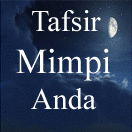The building of mountains. Many early philosophers,
theologians, and scientists going back at least as far
as Francis Bacon were formulating theories about the forces
involved in uplifting and deforming mountains for the past
several or tens of centuries. By the middle 1800s the processes
involved in the formation of mountains became
known as orogeny. Early ideas suggested that mountains
were deformed and uplifted by magmatic intrusions, or
reflected an overall contraction of the Earth with mountain
belts representing cooling wrinkles as on a shriveled prune.
In a classical work in 1875, Eduard Suess published Die
Entstehung der Alpen in which he argued that mountain
belts on the planet did not follow any regular pattern that
would indicate global contraction, and he suggested that the
mountain belts represented contraction between rigid blocks
(now called cratons) and surrounding rocks on the margins
of these massifs. However, he still believed that the main
driving force was global contraction induced by cooling of
the Earth. In Suess’s last volume of Das Antlitz der Erde
(The Face of the Earth) (1909), he admitted that the
amount of shortening observed in mountain belts was
greater than could be explained by global cooling and contraction,
and he suggested that perhaps other translations
have occurred in response to tidal forces and the rotation of
the planet.
In 1915 and 1929 Alfred Wegener published Die Entstehung
der Kontinente (The Origin of the Continents) and Die
Entstehung der Kontinente und Ozeane (The Origin of the
Continents and Oceans). Wegener argued strongly for large
horizontal motions between cratons made of sial, and using
such data as the match of restored coastlines and paleontological
data, he founded the theory of continental drift. Several
geologists, including Alex du Toit, Reginald Daly, and
Arthur Holmes, documented geological ties between different
continents supporting the idea of continental drift. In the
1940s–1960s, geophysical exploration of the seafloor led to
the recognition of seafloor spreading and provided the data
that J. Tuzo Wilson needed to propose the modern theory of
plate tectonics in 1965.
With the development of the ideas of plate tectonics,
geologists now recognize that mountain belts are of three
basic types, including fold and thrust belts, volcanic mountain
ranges, and fault block ranges. Fold and thrust belts are
contractional mountain belts, formed where two tectonic
plates collided, forming great thrust faults, folds, metamorphic
rocks, and volcanic rocks. Detailed mapping of the
structure in the belt can enable geologists to reconstruct their
history and essentially pull them apart. It is found that many
of the rocks in fold and thrust belt types of mountain ranges
were deposited on the bottom of the ocean, continental rises,
slope, shelves, or on ocean margin deltas. When the two
plates collide, many of the sediments get scraped off and
deformed, forming the mountain belts. Thus, fold and thrust
mountain belts mark places where oceans have closed. Volcanic
mountain ranges include places such as Japan’s Mount
Fuji, and Mount St. Helens in the Cascades of the western
United States. These mountain ranges are not formed primarily
by deformation, but by volcanism associated with subduction
and plate tectonics. Fault-block mountains, such as the
Basin and Range Province of the western United States, are
formed by the extension or pulling apart of the continental
crust, forming elongate valleys separated by tilted faultbounded
mountain ranges.
See also CONTINENTAL DRIFT AND PLATE TECTONICS:
CONVERGENT PLATE MARGIN PROCESSES; PLATE TECTONICS.

















Tidak ada komentar:
Posting Komentar
Catatan: Hanya anggota dari blog ini yang dapat mengirim komentar.